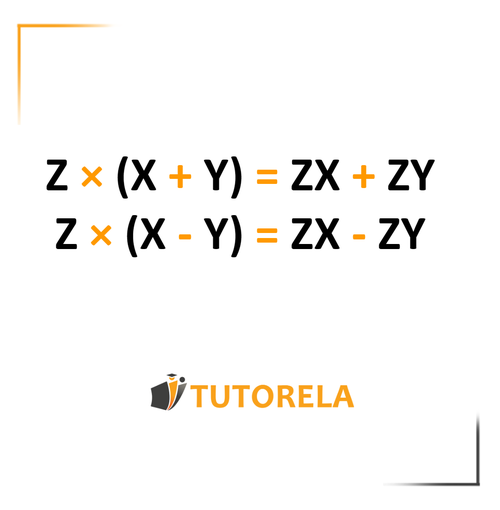Solving algebraic equations is made easier by understanding some basic rules and properties. A few examples of properties that we will learn to use in the seventh grade are: the distributive, associative and commutative properties. These properties get learned and relearned throughout our time in school, each time adding new layers to or understanding. Today we will focus on the distributive property. We will go into depth on what it is and how to use it, and we will briefly get to know the associative and commutative properties as well.
Distributive Property Practice Problems for 7th Grade Math
Master the distributive property with step-by-step practice problems. Learn to simplify algebraic expressions using multiplication and division exercises for middle school.
- Apply distributive property to simplify multiplication with large numbers like 7 × 96
- Break down division problems using distributive property such as 294 ÷ 3
- Solve algebraic expressions with variables like (X + 5) × (X + 6)
- Work with two sets of parentheses using (Z + T) × (X + Y) format
- Combine like terms after distributing multiplication across addition and subtraction
- Solve real-world word problems involving equal groups and distribution
Understanding The Distributive Property for 7th Grade
What is the distributive property?
The distributive property is a method to simplify multiplication and division exercises. Essentially, it breaks down expressions into smaller, easier to manage terms.
Let's see some examples:
If we look at the following examples, we can see that we have broken down the larger number into several smaller numbers that are more manageable. The value is the same as before, but now we can distribute a complex operation into several easy operations.
The distributive property can be described as:

Practice The Distributive Property for 7th Grade
Solve the following problem:
\( 3\times36= \)
Examples with solutions for The Distributive Property for 7th Grade
Solve the following exercise
?=24:12
Apply the distributive property of division and proceed to split the number 24 into a sum of 12 and 12, which ultimately renders the division operation easier and allows us to solve the exercise without a calculator.
Note - it's best to choose to split the number based on knowledge of multiples. In this case of the number 12 because we need to divide by 12.
Reminder - The distributive property of division actually allows us to split the larger term in a division problem into a sum or difference of smaller numbers, which makes the division operation easier and allows us to solve the exercise without a calculator
We will use the formula of the distributive property
Therefore the answer is section a - 2.
Answer:
2
In order to simplify the calculation , we first break down 94 and 72 into smaller and preferably round numbers.
We obtain the following exercise:
Using the associative property, we then rearrange the exercise to be more functional.
We solve the exercise in the following way, first the round numbers and then the small numbers.
Which results in the following exercise:
Answer:
166
In order to simplify the resolution process, we begin by using the distributive property for 140:
We then rearrange the exercise using the substitution property into a more practical form:
Lastly we solve the exercise from left to right:
Answer:
70
In order to solve the question, we first use the distributive property for 133:
We then use the distributive property for 33:
We rearrange the exercise into a more practical form:
We solve the middle exercise:
Which results in the final exercise as seen below:
Answer:
163
Solve the exercise:
84:4=
There are several ways to solve the following exercise,
We will present two of them.
In both ways, we begin by decomposing the number 84 into smaller units; 80 and 4.
Subsequently we are left with only the 80.
Continuing on with the first method, we will then further decompose 80 into smaller units;
We know that:
And therefore, we are able to reduce the exercise as follows:
Eventually we are left with
which is equal to 20
In the second method, we decompose 80 into the following smaller units:
We know that:
And therefore:
which is also equal to 20
Now, let's remember the 1 from the first step and add it in to our above answer:
Thus we are left with the following solution:
Answer:
21